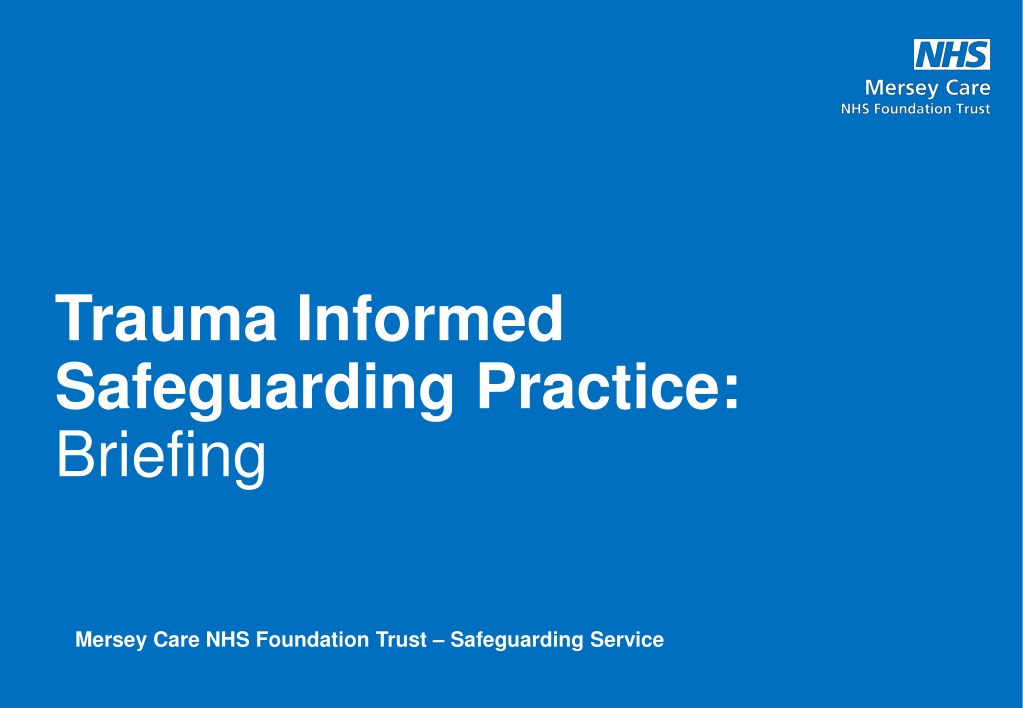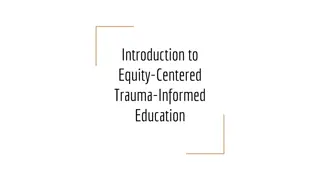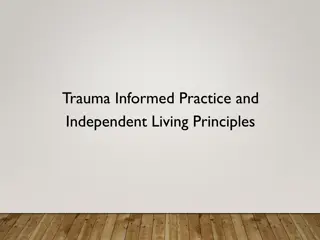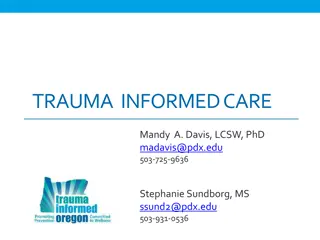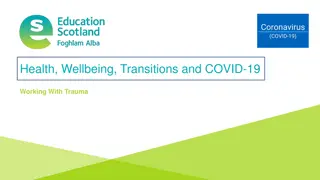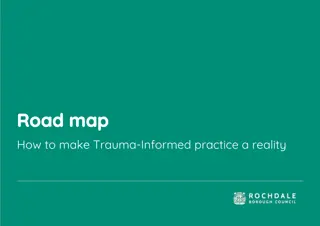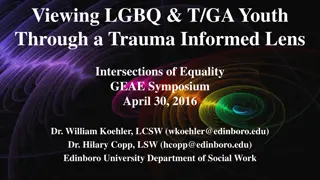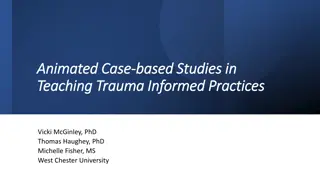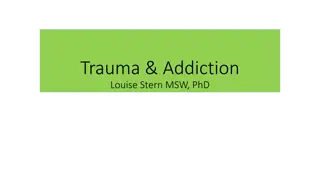Understanding Trauma-Informed Safeguarding Practices
Trauma is the result of harmful or life-threatening events, impacting an individual's well-being. Trauma-informed practice acknowledges the effects of trauma on neurological, biological, and psychological development. The body responds to stress with physiological changes, including fight, flight, freeze, or fawn reactions. Adverse Childhood Experiences (ACEs) contribute to long-term effects on mental health and behavior. Embracing trauma-informed approaches helps in recognizing, preventing, and addressing trauma effectively in various settings.
Download Presentation

Please find below an Image/Link to download the presentation.
The content on the website is provided AS IS for your information and personal use only. It may not be sold, licensed, or shared on other websites without obtaining consent from the author. Download presentation by click this link. If you encounter any issues during the download, it is possible that the publisher has removed the file from their server.
E N D
Presentation Transcript
Trauma Informed Safeguarding Practice: Briefing Mersey Care NHS Foundation Trust Safeguarding Service
What is Trauma? Trauma results from an event, series of events, or set of circumstances that is experienced by an individual as harmful or life threatening. Trauma can cause lasting adverse effects, limiting the ability to function and achieve mental, physical, social, emotional or spiritual well-being. What is Trauma Informed Practice? Trauma-informed practice is an approach to health and care interventions which is grounded in the understanding that trauma exposure can impact an individual s neurological, biological, psychological and social development. Realise that trauma can affect individuals, groups and communities Prevent re- traumatisation Recognise the signs, symptoms and widespread impact of trauma
Government definition of Trauma Informed Practice: Safety Cultural consideration Trustworthiness Empowerment Choice Collaboration
How does the body respond to stress? The acute stress response, is a physiological survival response that occurs when a person experiences a perceived threat. The hypothalamus activates the sympathetic nervous system by sending signals through the autonomic nerves When a perceived threat is encountered the amygdala sends a distress signal to the hypothalamus The adrenal glands respond by pumping adrenaline and cortisol into the bloodstream As adrenaline circulates through the body, it brings on several physiological changes
The Four Fear Responses: The acute stress response is also called the fight, flight, freeze or fawn response. Each reaction is automatic, because how we respond to stress and danger is determined by the brains autonomic nervous system. Fight Flight Freeze Fawn Facing any perceived threat aggressively Unable to move or act against a threat Befriending, pleasing or appeasing the threat Running away from the threat
Adverse Childhood Experiences: UK national Adverse Childhood Experience (ACE s) studies reveal that around 50% of the UK population experiences at least one ACE, and one in ten people experiencing four or more. Emotional neglect Physical neglect Physical abuse Emotional abuse Household drug and alcohol use Caregivers have mental health problems Sexual abuse Domestic abuse Loss of a parent (e.g. through separation, death or abandonment) Caregivers have spent time in prison
Core Beliefs: Core beliefs are deeply held beliefs that inform how people see themselves and the world. Trauma can create negative, skewed and rigid core beliefs. There is something wrong with me I am not good enough I cannot trust anyone I don t deserve to be happy I can t show anyone my emotions I am a bad person I am worthless When relationships are inconsistent Unmet needs Feeling unaccepted When nurturing is absent Mistrust/Insecure Rejected/Abandoned Invalidated Emotional dysregulation
Trauma and Safeguarding Trauma and Safeguarding are closely linked; being subjected to abuse or neglect can be traumatising but can also retraumatise individuals. If an individual has experienced relational trauma, and they have not been nurtured to process emotions and things that happen to them they are likely to create negative core beliefs, which through being subjected to abuse or neglect could be reinforced. Some examples of safeguarding and trauma: Hoarding: A person may hoard due to experiencing trauma. The hoarding of items could be, e.g., a person building a wall between outside world and themselves due to having experienced trauma, or it could be that the person as a response to trauma feel unable to cope or with their emotions which is further exacerbated by shame around the hoarding. A response to hoarding is often forced cleaning, which may be needed for safety reasons, but could be counterproductive in terms of a trauma informed approach. It is essential to apply a person-centred approach and understand why a person is hoarding to prevent retraumatisation. Domestic abuse: Domestic Abuse is common in England, especially among women, and is strongly associated with self-harm and suicidality. The link between Domestic Abuse and suicide has been recognised in the newly published Suicide Prevention Strategy (2023-28). This highlights the importance to understand a person's distress when they present as suicidal or with self-harm. Domestic Abuse is a hidden crime, and victims are usually too fearful tell anyone about the abuse hence why routine enquiry about domestic abuse has been recommended to support identification. As a generalisation, victims of Domestic Abuse may have negative core beliefs due to ACEs whereby they may have grown up with Domestic Abuse, thus abuse being normalised.
